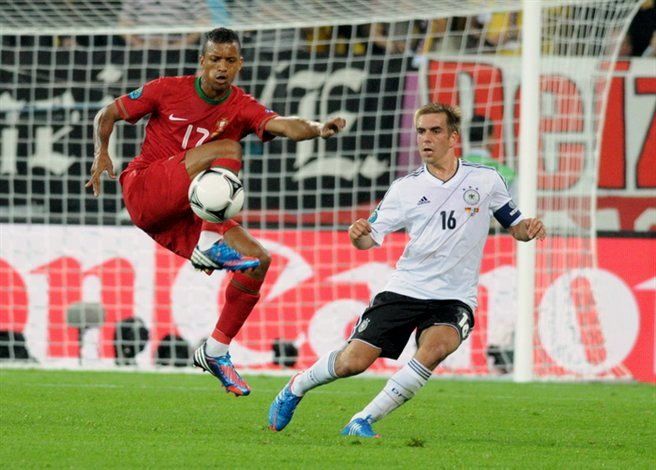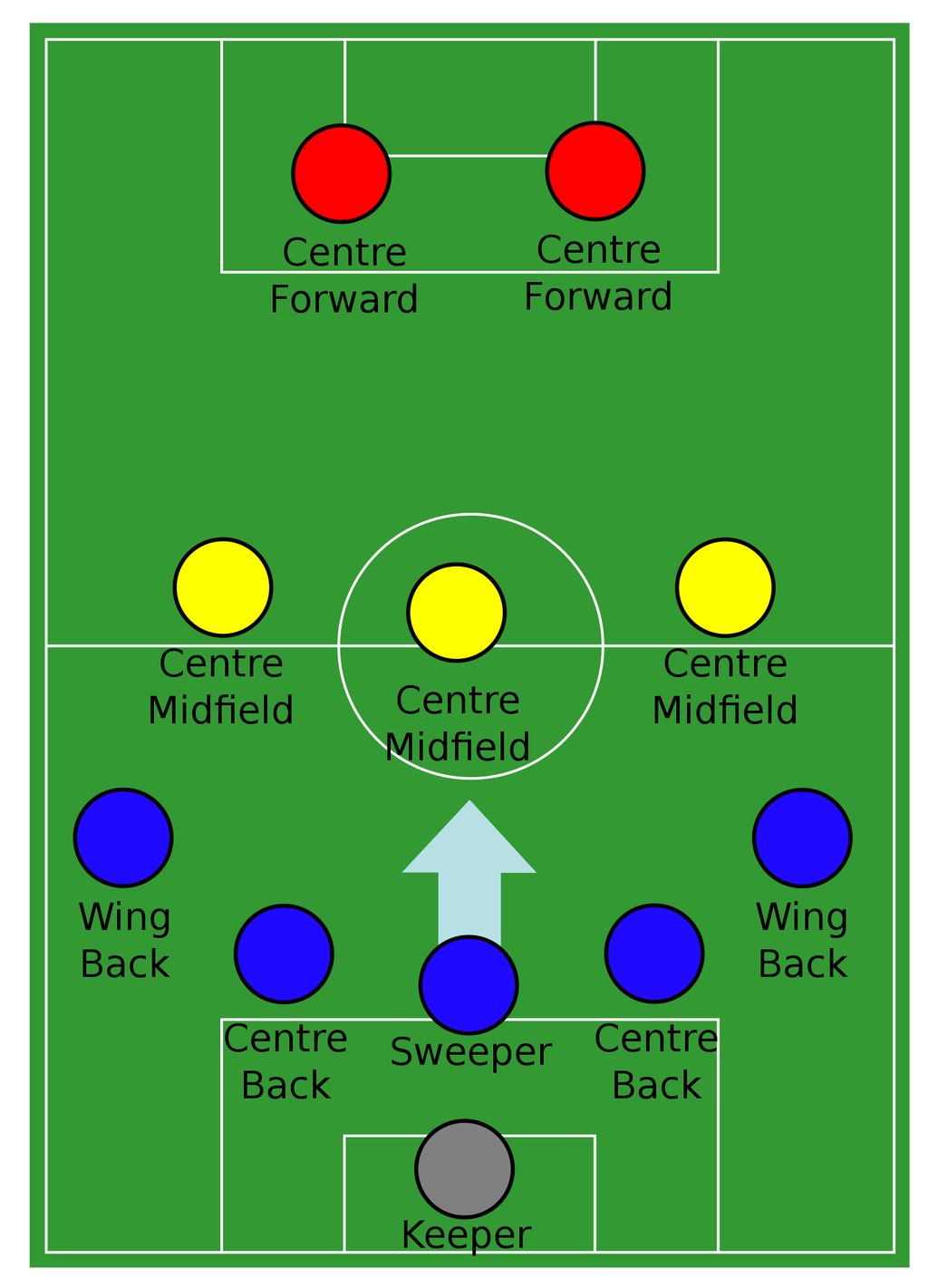Types Of Defenders In Football
Jun 19, 2019 • 241 views
A defender in football is an outfield player whose primary role is to prevent the opposition from scoring goals. Defenders are positioned exactly in front of the goalkeeper and they maintain the defensive line of the team. Several types of defenders exist and they are utilised according to the requirements of the coach.
1. Centre-back (CB) :

Terry (right, CB) marking Drogba (left, CF)
A Centre-back (or Centre-half) is a defender that plays directly in front of the goal and is responsible for shutting down the centre-forwards of the opposition. They accomplish this by blocking shots, tackling, intercepting passes, contesting headers and marking forwards to discourage the opposing team from passing to them. Opposition centre-forwards often try to move into the half-space that exists between the CBs and to prevent this, the CBs either defend by zonal-marking or man-marking. In zonal-marking, a CB is given an area to cover and in man-marking, the CB tracks an opposition player. They also perform clearances to move the ball away from danger. A clearance is an unaimed kick to ensure that the ball goes as far as possible from opposition attackers.
Apart from these defensive duties, when in possession, they are supposed to give pin-point long balls to the attacking players. Modern football requires the CBs to develop ball-playing abilities. Many successful central-defensive partnerships have involved pairing a more physical defender with a defender who is quicker, more comfortable in possession and capable of playing the ball out from the back. Eg. of these are Vidic-Ferninand in Manchester United, Ramos-Pepe in Real Madrid/ Ramos-Pique in Spain, Chiellini-Bonucci in Juventus/Italy. Normally, the CBs do not get involved in attacks, but during set-pieces, they are a serious threat in the form of headed goals (Ramos) while some CBs are well known to strike powerful free-kicks (David Luiz). Depending on the formation, 2 or 3 CBs may be used.
2. Sweeper :

5-man defence with a sweeper
The sweeper (or libero) is a more versatile centre-back who "sweeps up" the ball if an opponent manages to breach the defensive line. They sit in between the CBs and are the last defenders that try to stop opposition attack. If successful, they may start a counter-attack as well by moving forward quickly and passing the ball to players in space. The sweeper requires good passing abilities and needs to be confident with the ball in addition to the usual tackling and other defensive abilities. Franz Beckenbauer is looked upon as one of the most influential players who played as a sweeper and won a Ballon d'Or too. Ronald Koeman and Fernando Hierro have been described as sweepers and both of them have scored a lot of goals. This position has gradually been less used as 5 or 3-man defence were replaced by a 4-man defence. However, Leonardo Bonucci and David Luiz have performed similar roles in a 3 defender system (under Antonio Conte) where after gaining possession, they advanced into the midfield, acting as a secondary playmaker for the team and using their vision to set up teammates for goalscoring chances. Some goalkeepers, who are good with the ball at their feet and can leave the goal to intercept and clear through balls are also used as "sweeper-keepers". Eg. Manuel Neuer, Ter Stegen, van der Sar, etc.
3. Full-backs : (FB)

Lahm (right, FB) with Nani (left, Winger)
A Full-back (Right-back/Left-back) is a defender that occupies the wide positions on either sides in a 4-man defence and generally, stick to their position. In some formations where there are no wingers to provide width and stretch play, full-backs may need to bombard down the flanks in attack as well. Duties of a full-back includes closing down wingers of the opposition from providing crosses and thus cutting the supplies to the opposition striker. They also maintain the defensive line and rest of the defenders align accordingly for an "offside trap". They also take throw-ins for their team. Offensive duties for full-backs have increased recently as managers prefer their FBs to provide passing options down the flanks and ultimately provide crosses inside the opposition's penalty area. Due to this, they have a good number of assists as the strikers convert crosses into goals.
Some full-backs have very powerful shooting abilities and often score a goal from distance or a free kick. In general, the full-backs need to cover wide areas on the pitch and hence need to have extraordinary stamina for the same. Some prominent full-backs ever are Paolo Maldini (Italy, often regarded as the Greatest Defender of All Time), Cafu (Brazil), Roberto Carlos (Brazil).
4. Wing-backs (WB) :

5-man defence with wing-backs
A wing-back is a variation on the full-back, but with heavier emphasis on attack. This type of defender focuses more heavily on attack than defence, yet they must have the ability, when needed, to fall back and mark opposing players to lessen the threat of conceding a goal-scoring opportunity. They are exclusively used in 3 or 5-man defence and are sometimes counted as midfielders in a 3-4-3 or 3-5-2 formation. They need to perform as a winger while attacking and as a full-back while defending, hence they may be termed as a combination of both positions (thus, the name). A wing-back needs to be of exceptional stamina, be able to provide crosses upfield and defend effectively against opponents' attacks down the flanks. A defensive midfielder is usually fielded to cover the advances of wing-backs. Antonio Conte as a manager extensively used wing-backs with Italy and Chelsea. In short, WBs are attacking forms of FBs that have the same defensive duties as the latter. Some of the best wing-backs ever are Dani Alves (Brazil), Marcelo (Brazil), Philip Lahm (Germany), etc.
:)
